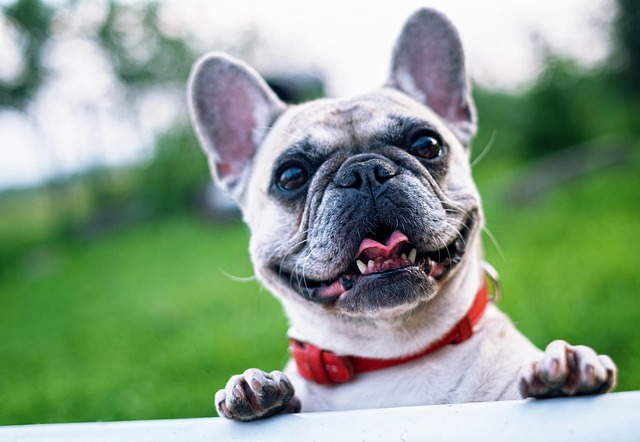
How can I tell if my dog's heatstroke is serious
Let’s be real: It’s a sticky August morning in Los Angeles, and you took your 2-year-old Golden Retriever, Max, for a walk a little later than usual
A shiny coat and healthy skin aren’t just about making your dog look great—they’re signs of overall wellness that every pet parent should prioritize. Start with diet: look for high-quality dog food that lists real meat as the first ingredient, since protein is key for strong hair follicles and skin repair. Many vets in Europe and North America also recommend adding a small amount of fish oil (like salmon oil) to your dog’s meals, as it’s rich in omega-3 fatty acids that soothe dry, itchy skin and boost coat shine. Just be sure to check with your vet first to avoid over-supplementing, especially if your dog has any existing health conditions.
Grooming habits matter too, but they need to fit your dog’s breed and lifestyle. Short-haired breeds like Beagles might only need a weekly brush with a rubber mitt to remove loose fur and distribute natural oils, while long-haired breeds such as Golden Retrievers could need daily brushing to prevent mats that irritate the skin. When it comes to baths, avoid overdoing it—washing your dog more than once every 4-6 weeks can strip their skin of essential oils, leading to dryness. Use a gentle, pH-balanced dog shampoo (human shampoos are too harsh) and make sure to rinse thoroughly. If you take your dog hiking or to dog parks often, a quick wipe-down with a damp cloth after outings can remove pollen or dirt that might cause skin irritation.
 Don’t forget to factor in local laws and environmental risks that affect your dog’s skin. For example, some areas in the US require dogs to be on flea and tick preventatives year-round, and skipping this can lead to infestations that cause intense itching and skin infections. In parts of Europe, certain plants (like giant hogweed) are common in parks and can cause chemical burns on a dog’s skin if they come into contact. Familiarize yourself with local pet safety laws—many regions also have regulations about regular vet check-ups, which are crucial for catching early signs of skin issues like allergies or thyroid problems that affect coat health.
Don’t forget to factor in local laws and environmental risks that affect your dog’s skin. For example, some areas in the US require dogs to be on flea and tick preventatives year-round, and skipping this can lead to infestations that cause intense itching and skin infections. In parts of Europe, certain plants (like giant hogweed) are common in parks and can cause chemical burns on a dog’s skin if they come into contact. Familiarize yourself with local pet safety laws—many regions also have regulations about regular vet check-ups, which are crucial for catching early signs of skin issues like allergies or thyroid problems that affect coat health.
Regular exercise and mental stimulation play a surprising role in skin and coat health too. Dogs that get enough daily walks and playtime have better blood circulation, which delivers more nutrients to the skin and hair follicles. Stress can also take a toll—anxious dogs might over-groom (leading to bald spots) or have dull coats, so activities like puzzle toys or training sessions can keep their minds calm and bodies healthy. Even simple changes, like providing a clean, dry bed away from drafty areas, can prevent skin irritation from dampness or cold.
Caring for your dog’s skin and coat is a mix of small, consistent habits that fit your daily routine and local environment. By focusing on a nutrient-rich diet, breed-specific grooming, following local pet laws for preventatives, and keeping your dog active and stress-free, you’ll help them maintain that healthy, happy glow. If you notice sudden changes—like excessive scratching, bald patches, or a dull, brittle coat—don’t wait to visit your vet; early intervention is key to resolving issues before they get worse. Your dog can’t tell you when their skin hurts, so it’s up to you to watch for the signs and give them the care they need.

Let’s be real: It’s a sticky August morning in Los Angeles, and you took your 2-year-old Golden Retriever, Max, for a walk a little later than usual

You're enjoying a summer afternoon at the park when you notice your dog has stopped panting and appears disoriented - their gums are bright red

Let’s paint the picture: You’re in your Denver apartment, watching your 4-year-old Boston Terrier, Ruby, plop down mid-play session with her favorite toy

Many dog owners notice their pets nails seem shorter after regular walks,but how much does this daily activity actually help?The answer depends on where you walk—concrete sidewalks or asphalt streets gently file nails as a dog's paws hit the ground

Most dog owners notice their pup scooting across the carpet at some point, but few connect it to impacted anal glands. These small sacs near a dog’s rectum secrete a scent for marking territory

Most vets agree that regular dog teeth cleaning is key to avoiding painful dental issues later. For healthy adult dogs, a professional cleaning at the vet’s office every 12 to 18 months usually works well.